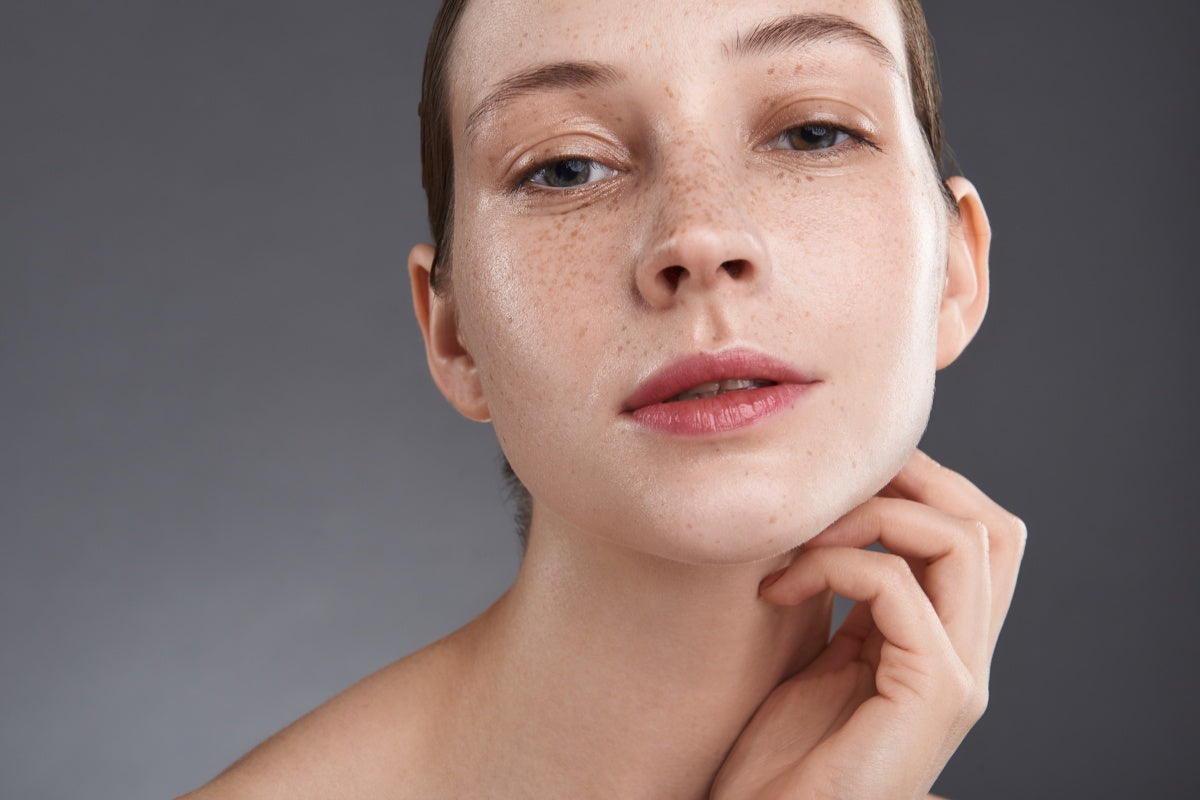Blog > All
How Does Infrared Light Affect Humans?
Written by Our Editorial Team
6 min read
00
DAYS D00
HOURS H00
MINUTES M00
SECONDS S

How does infrared light affect humans? The answer goes beyond the warmth we feel from the sun or a heater.
Infrared waves penetrate beneath the skin, where they influence circulation, cellular energy, and even collagen production.
For skincare and wellness, this means infrared is more than just gentle heat. It's also a tool that can support repair, regeneration, and comfort when delivered at the right wavelengths and intensities.
Understanding how it works helps explain why infrared is widely used in dermatology, physical therapy, and now in advanced at-home treatments.
What this article covers:
Infrared light sits just beyond the visible light spectrum, and its most familiar effect is warmth.
Far-infrared wavelengths in particular are absorbed by water molecules in the skin, producing gentle heat. This heat dilates blood vessels, relaxes muscles, and creates a soothing effect that people recognize from infrared saunas and heating pads.
While this warmth is beneficial, devices designed for skincare must balance comfort with safety.
That is why regulated tools like Qure's Q-Rejuvalight Pro red light mask are designed to deliver therapeutic energy at safe intensities, minimizing heat that could otherwise irritate sensitive skin.

Infrared exposure also supports circulation. When capillaries expand, oxygen and nutrients are delivered more efficiently to the skin and underlying tissue.
Better circulation accelerates natural repair processes and helps flush out waste products.
For skin, this means improved tone and a healthier glow. For muscles and joints, it translates to reduced stiffness and enhanced recovery after strain.
By improving how blood and nutrients flow, infrared light helps the body do what it already knows: repair itself more effectively.
One of the most studied uses of infrared light is in pain management. Near- and mid-infrared wavelengths penetrate beyond the skin to reach muscles, tendons, and even joints.
This depth of action reduces inflammation and relaxes tight tissue, making it a staple in sports medicine and rehabilitation.
For people managing everyday discomfort, whether from exercise or chronic tension, infrared offers a non-invasive option with few side effects.
Its ability to soothe while supporting circulation explains why infrared devices are increasingly used both in clinics and at home.

The depth of penetration depends on wavelength. Red light at 600–700 nanometers reaches the dermis, where fibroblast cells produce collagen.
Near-infrared, between 700–900+ nanometers, penetrates further into connective tissue and even superficial muscles. Far-infrared, above 1,000 nanometers, mainly produces surface heat without deep cellular activation.
This is why the right spectrum matters.
In skincare, near-infrared is valued for its ability to reach the dermis and influence collagen remodeling, while still being gentle enough for daily use.
If you're curious about the relationship between wavelength and skin depth, our guide on how deep does red light therapy penetrate explains this principle in detail.
Beyond warmth and circulation, infrared light can trigger changes at the cellular level through a process known as photobiomodulation.
Mitochondria, the powerhouses of cells, absorb specific wavelengths and respond by producing more adenosine triphosphate (ATP).
ATP is the energy currency that fuels repair, growth, and regeneration.
In skin, this increase in cellular energy helps fibroblasts produce collagen and elastin, leading to a firmer, smoother texture over time.
In other tissues, it accelerates recovery and reduces oxidative stress. Infrared is not simply heating tissue – it is energizing it in a measurable, restorative way.
This mechanism is the foundation of Qure's design. The Q-Rejuvalight Pro LED Mask is FDA-cleared and dermatologist-approved, ensuring that the wavelengths chosen are not only effective for photobiomodulation but also safe for daily facial use.

Infrared is everywhere in daily life, from sunlight to household heat lamps. In these uncontrolled settings, exposure is generally safe but inconsistent because wavelengths and intensities vary.
For example, the sun delivers a broad spectrum of light, including infrared, but that exposure depends on time of day, cloud cover, and skin protection.
By contrast, therapeutic devices deliver targeted wavelengths and regulated intensities to achieve specific outcomes.
That precision is what makes FDA-cleared tools valuable – they aim to deliver effects without unnecessary heat or risk.
Consistency is what transforms infrared from background warmth into purposeful therapy. A verified Qure reviewer shared:
“The mask is easy to set up and start using immediately. My primary concern is discoloration from sun exposure and fine line/wrinkle prevention. I have very dry skin, and after 2.5 weeks, I can tell a significant difference in my skin's moisture, especially since it is the middle of winter. The discoloration on my forehead is also evening out, and the red, patchy spots on my cheeks are not as inflamed.”
Her review shows what happens when control, regularity, and safety come together: even in less-than-ideal conditions (dry skin, winter), structured infrared treatment made perceptible improvements in moisture, tone, and inflammation without overdoing it.
Infrared light touches almost every layer of experience: the surface warmth that calms, the circulation that feeds tissue, and the cellular energy that fuels repair.
That is why infrared is used in fields ranging from physical therapy to advanced skincare. It can comfort, strengthen, and rejuvenate when delivered in the right way.
What matters most is precision.
Controlled devices such as the Q-Rejuvalight Pro red light mask use wavelengths studied for skin health and limit each session to three minutes, making it easy to stay consistent without overexposure.
Infrared light is everywhere, but in the right form, it stops being background heat and becomes a reliable, science-backed therapy you can trust.
Further reading on related skincare topics:
Most Popular Posts